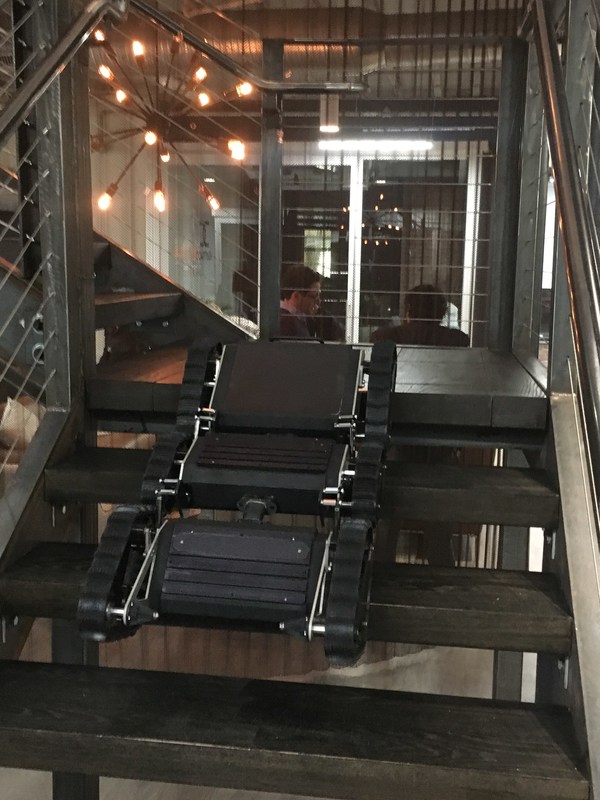


RAMAT GAN, Israel, July 6, 2018 /PRNewswire/ -- Beeper Communications has selected Simlat to design the mission support systems and software for its Unmanned Search and Rescue System project (USRS). The project in conjunction with its U.S. counterpart, Mantaro Networks, aims to fill in "capability gaps" for First Responders, as identified by Homeland Security and supported by the National Technology Plan for Emergency Response to Catastrophic Incidents. USRS will combine advanced wireless communication platforms and software, with a patented Unmanned Ground Vehicle (UGV) design, to develop autonomous Search and Rescue (SAR) robots. The robots will aid in emergency response and disaster recovery situations.
Simlat will provide the M3-SAR (Mission Mind Multiplier for Search and Rescue) aspects for the team. M3-SAR is a next-generation mission support system including smart algorithms, Artificial Intelligence (AI), and application-specific capabilities. The system has been chosen by Beeper to be included along with the IE 5000 Multi-WAN bonder, and Mantaro's TeleTrak UGV.
The companies state that "a significant development of USRS will be the autonomous operation of robotic unmanned ground vehicles and devices, and their cooperative action with First Responders, supported by Simlat's M3-SAR and over a resilient broadband communication network." The effective operation of autonomous robots will be enabled by communication infrastructure designed and developed by Beeper. The successful completion of this project will also provide a wireless broadband infrastructure; the means to transfer large amounts of data utilizing a full spectrum of communication frequencies and optimization algorithms. This high-bandwidth connectivity will enable the exchange of media-rich information between First Responder teams and autonomous robots for remote monitoring of incident landscape in real time, as well as progress and status reporting.
Technically, USRS will create the most effective and detailed Common Operational Picture (COP) for the responding agencies. The data from the field will be accessible and shared between varied agencies, and reduce interoperability challenges that currently exist.
The companies have already achieved an important milestone. The Mantaro UGV is now fully functional and operable using the Beeper cellular bonder as the only means of network communication. This is significant as the UGV can now be controlled without typical "line of sight" requirements. In other words, the system can be operated and monitored from anywhere. "This is a real differentiator and advantage when thinking about the safety of a UGV operator…" states Jeremy Parsons, CEO Mantaro. "We have now proven an ability to use the bonder to send and receive high bandwidth data to and from the UGV. This provides real-time operational capabilities, as well as the exchange of information between the field and remote command center, further removing the operator from harm's way during uncertain and challenging situations. It was one of the primary initial goals of the project and we have validated this quickly."
Beeper's IE 5000 SD WAN Cellular Bonder is a highly-reliable, cost-effective, secure edge/access networking communications device, delivering enterprise-class wireless transport and security over diverse public wireless infrastructure (3G/4G/LTE cellular networks). The framework is built upon a robust layer of software providing load-balancing, link aggregation, bonding and redundancy. The IE 5000 actively and dynamically analyzes and profiles existing cellular networks for capacity and availability. It identifies the four most available channels aggregates that capacity, then bonds the four channels into one high-capacity Virtual Private Network (VPN), which is securely managed by the end user.
The system is fully backwards compatible, frequency/device agnostic and ideal for the transmission of low-latency (less than one-half second), analog and digital, real-time video and data from the field to the command center, anywhere in the world. Low latency is essential for the operation and control of any unmanned vehicle. The system provides un-tethered mobility in the most challenging environments creating a highly scalable solution, as multiple feeds for any data and video can be daisy chained through the Bonder, leveraging other existing PD/SWAT/MIL assets.
The companies expect to begin their first technical integration and deployments by December 2018, and will be displaying different aspects of the system at APSCON 2018 in Louisville KY, July 9-14.
For more information:
www.Beepergroup.com
http://www.broadbandwirelessnetwork.info
jared@beepergroup.com
SOURCE Beeper Communications